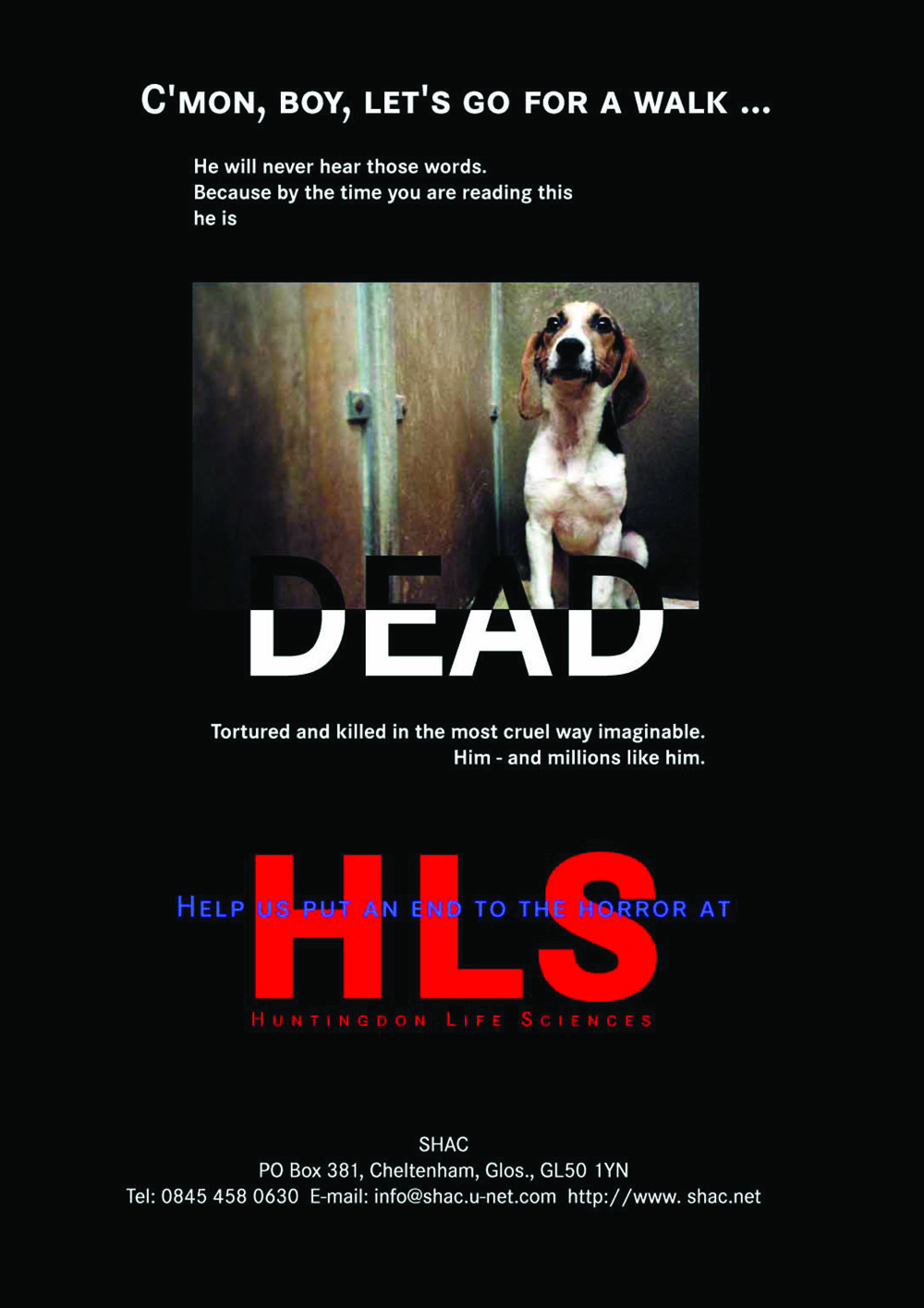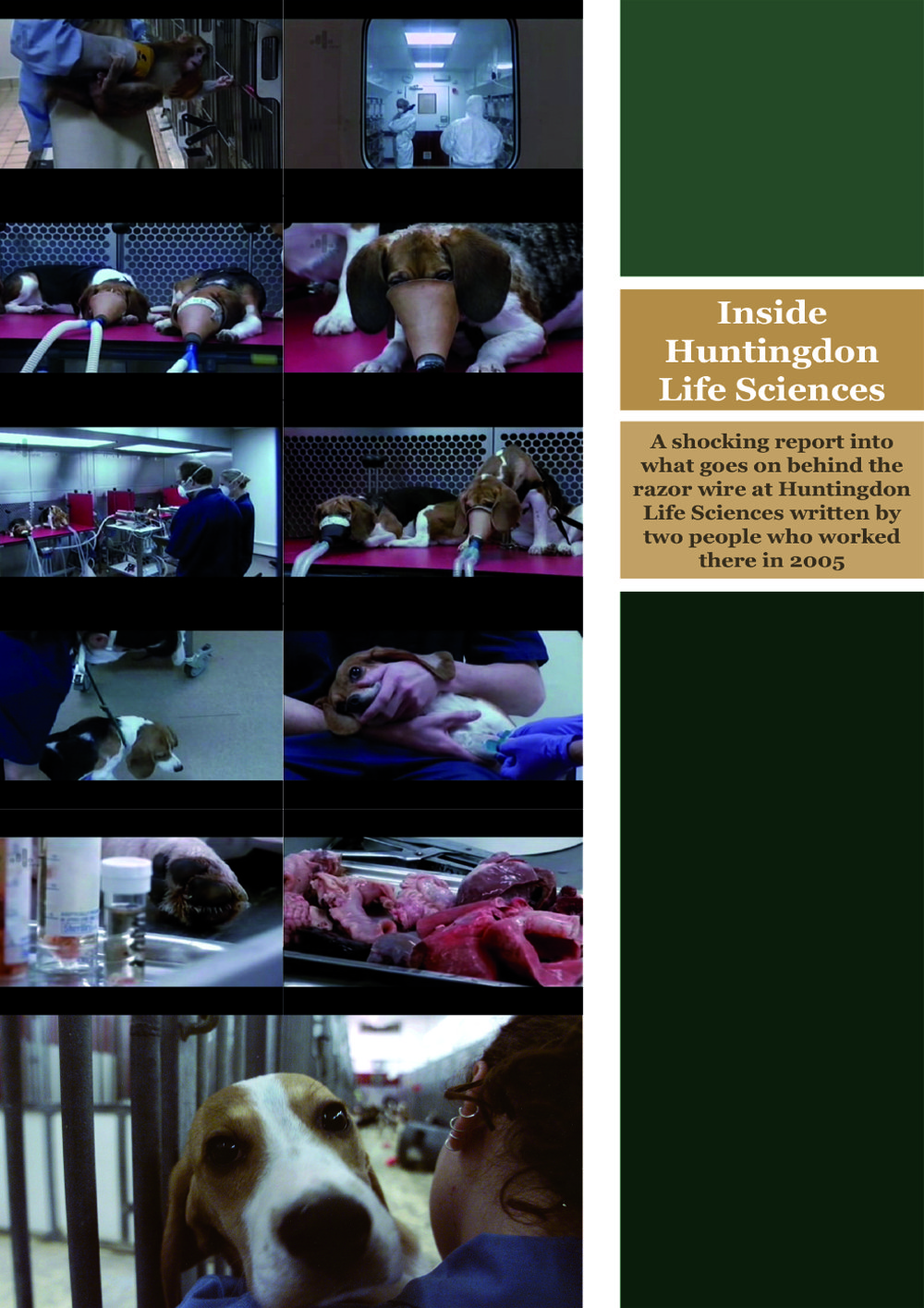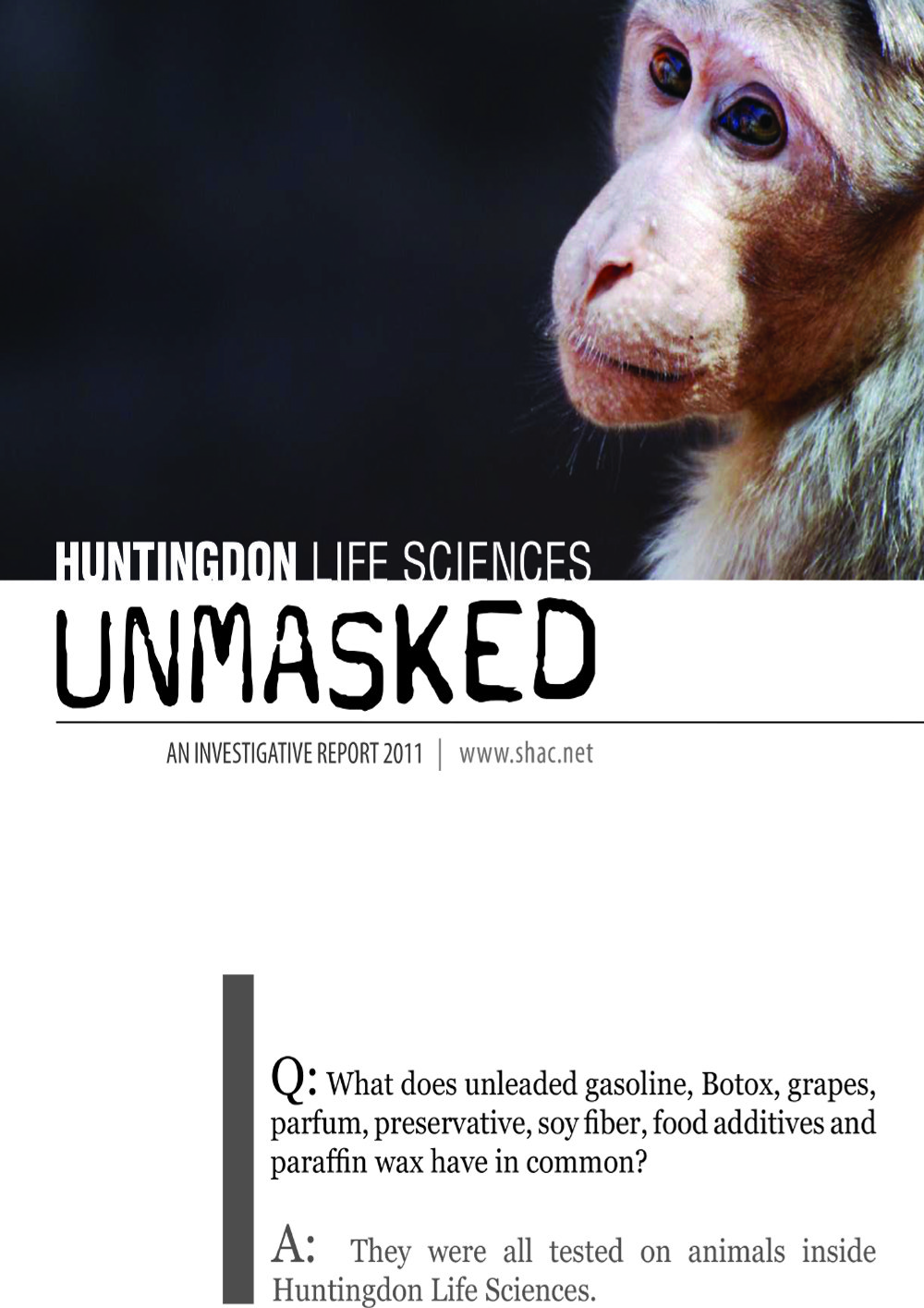
I saw co-workers slap them, yell at them and swing them through the air by the scruff of the neck when they had to move them. I was continually chastised for picking the dogs up carefully.
– Michele Rokke, undercover investogator
A BRIEF HISTORY OF HUNTINGDON LIFE SCIENCES
For the duration of the SHAC Campaign (1999-2014), HLS were Europe’s largest contract animal research organisation. Their business model was to test any commercial product requested by their clients, including artificial sweeteners, paint, energy drinks, and even rose water. They had three facilities – two in England and one in the US, where they killed over 500 animals every single day.
Despite their sinister slogan, “Your secret is our secret,” HLS and their customers repeatedly had their secrets aired in public due to multiple undercover investigations, all of which exposed horrific cruelty, law breaking, suffering, and abuse inside their facilities.
Until the next time they are exposed we have no idea what is taking place inside their laboratories (which are all still operational), but if their history is anything to go by, it isn’t anything good.
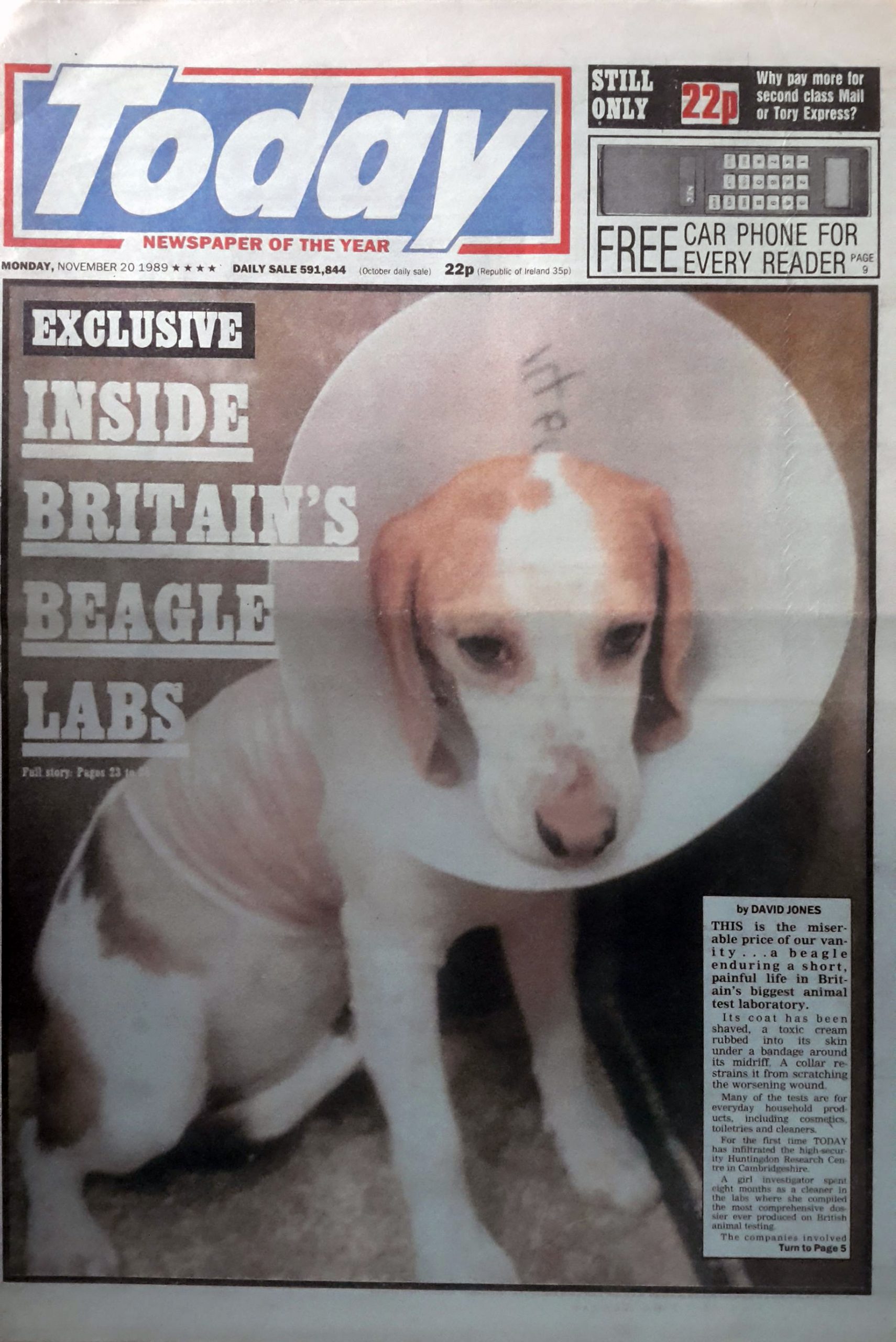
1981
HLS were first exposed by Sarah Kite who worked undercover for the British Union for the Abolition of Vivisection (BUAV). Whilst working in the rodent toxicology unit Sarah revealed details of fatal tests for food colouring, as well as a tranquilliser study in which she witnessed, “Rats having fits after dosing for up to one minute. Cages 85, 95 and 100 had large amounts of dark red blood on their trays.” A laboratory technician described the animals as “rotting but still alive.”
Sarah was then moved to the dog toxicology unit where she stayed for eight weeks. She witnessed beagles being poisoned with pesticides, dental hygiene products, drugs, and clingfilm. In one study, 48 Beagles had an anti-psoriasis cream applied to their shaved backs for 30 days. The cream was rubbed into the open sores and blisters they developed before being bound in plaster. The dogs wore head collars to prevent them from pulling at the plaster due to pain.
Sarah noted that staff were encouraged not to show kindness or give attention to the puppies, because, “Time and speed were of the essence.” Interacting with them was considered a waste of time, as they might become spoilt and not do what they were told. While cleaning cages, Sarah frequently found blood, vomit, and diarrhoea from sick dogs, who she described as, “Extremely thin with their fur standing on end. They were visibly shaking and often so scared they were unable to leave their cages.”
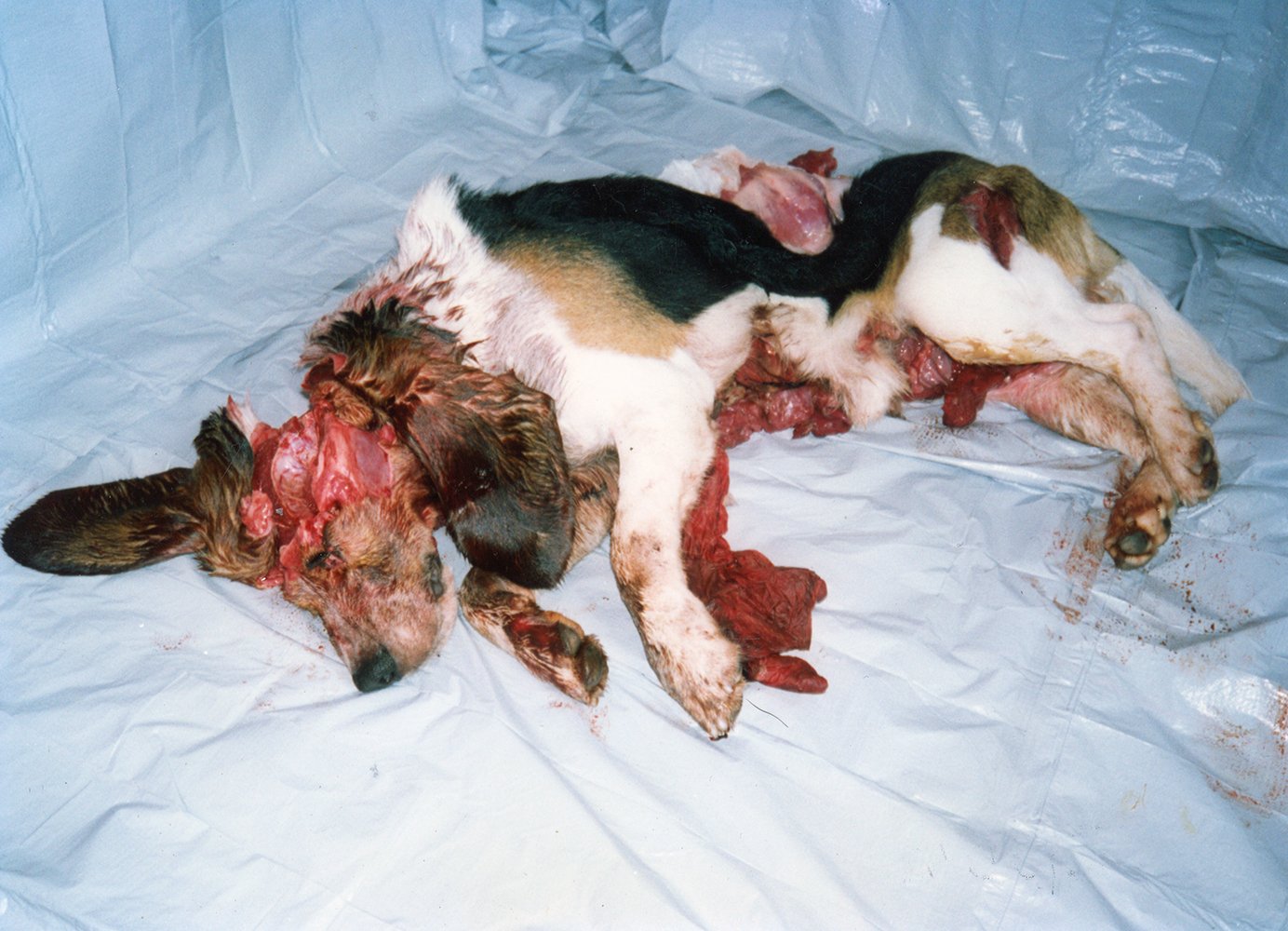
1996/1997
Zoe Broughton secretly filmed inside of HLS for the Channel 4 documentary It’s a Dog’s Life. She followed the entire process of the beagle puppies short lives, and assembled evidence of “cruelty and incompetence.” Amongst the catalogue of abuse, staff were filmed shaking and punching eight week old beagle puppies in the face. Two men were prosecuted under the Animals Act of 1911 for, “Cruelly terrifying dogs,” and were ordered to pay £250 costs. It was the only time that laboratory technicians had been prosecuted for animal cruelty in the United Kingdom.
As a result of Zoe’s film, HLS had their license suspended for six months.

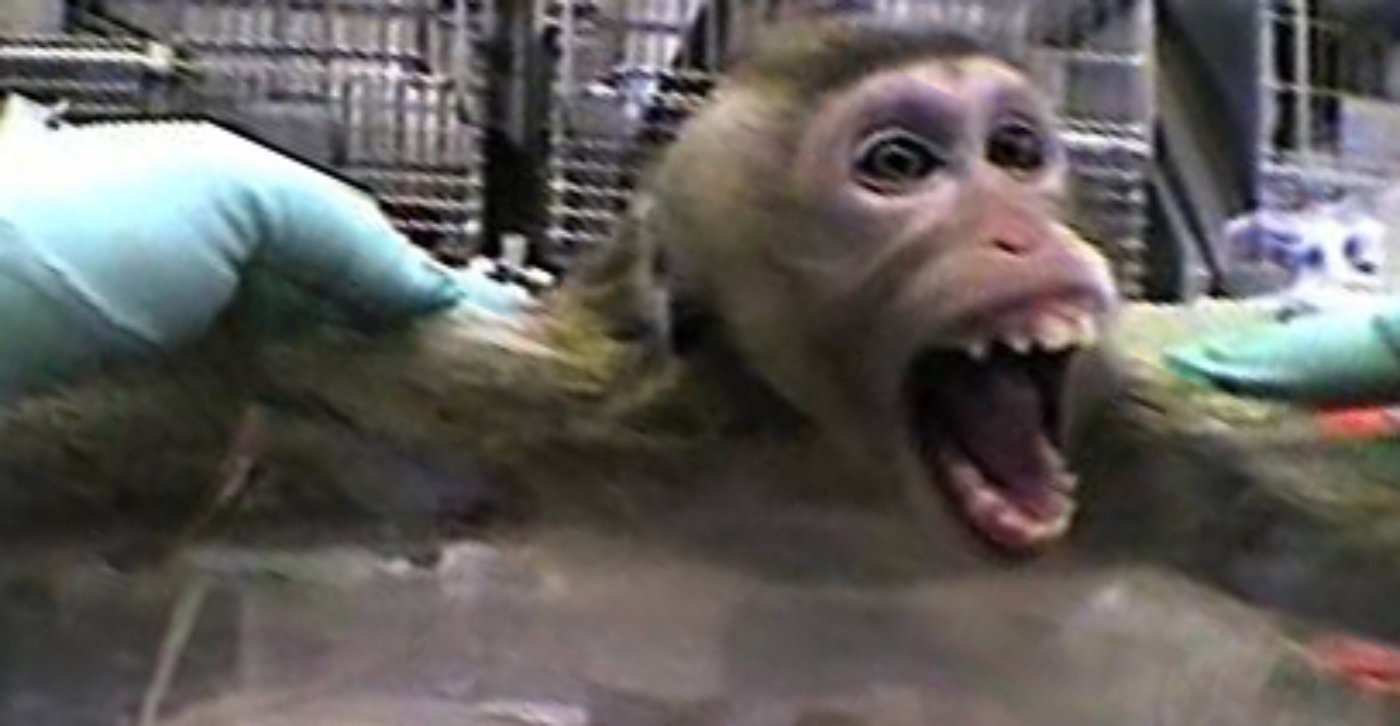
1996/1997
Michelle Rokke from People for the Ethical Treatment of Animals (PETA), was hired as a lab technician at Huntingdon’s New Jersey laboratory. Wearing glasses which contained a hidden video camera, she taped over 50 hours of footage over the course of her eight months of employment. She witnessed staff beating dogs so bad they couldn’t walk, animals being cut with scissors until they bled to death and monkeys having their organs removed without anaesthesia. When she questioned whether the tests were being conducted properly, one scientist told her, “Never did it, never saw it, you can’t prove anything,” whilst another declared that, “You might as well wipe your ass on that data.” As a result of her investigation, HLS were fined $50,000. You can read Michelle’s full diary here.
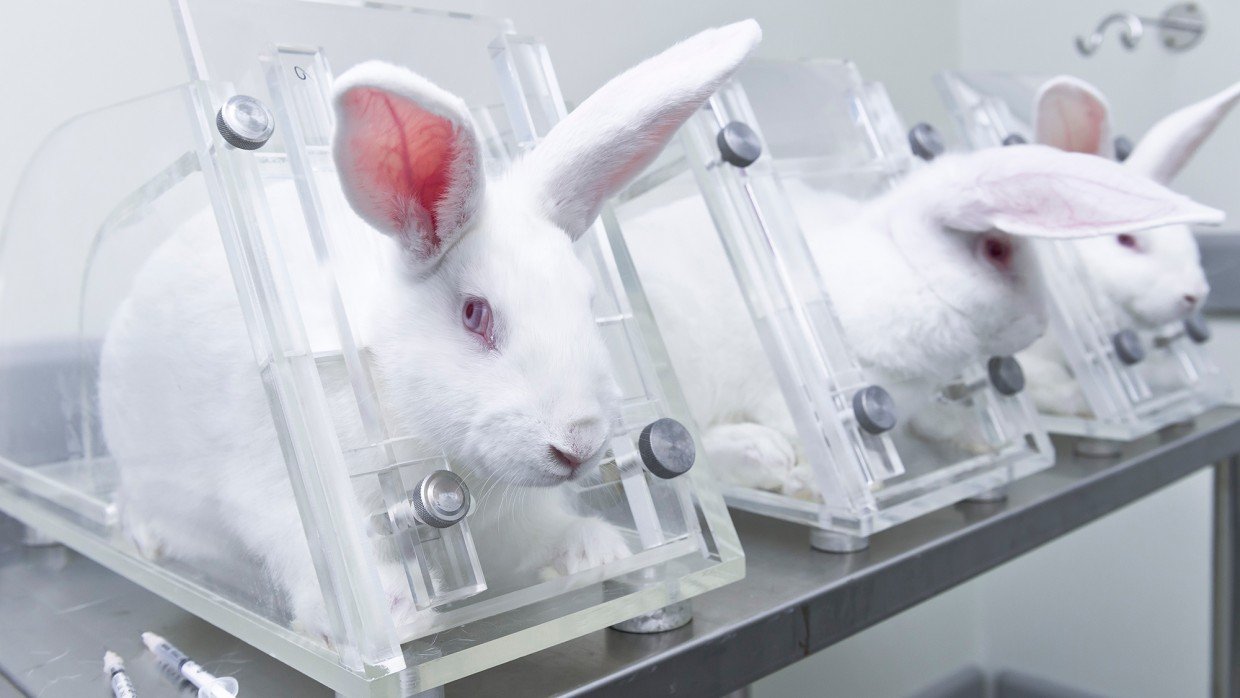
2000
A series of reports published in journals by Pergamon Press exposed experiments conducted at HLS on behalf of Johnson & Johnson for their artificial sweetener Splenda. During the experiments which were reported by The Sunday Mirror, 12,800 animals including dogs, monkeys, rabbits, rats and mice were killed in studies intending to reveal the effects of mass overdose of Sucralose on the nervous system. In one instance, four beagle puppies were starved prior to being force fed Sucralose through tubes. Marmoset monkeys died or were killed after being force fed Sucralose until they became brain damaged.


2003
Just weeks after HLS had their license reinstated in 1997, they began work on a series of xenotransplantation experiments which would result in the largest ever release of animal research data in British history. The experiments were a litany of legal and ethical breaches and blunders. Fearful of the impact HLS’ closure would have on the economy, the government conspired with HLS and Novartis/Imutran to prevent the release of the data, which only came to public attention following a long legal fight by Uncaged Campaigns.
Wild caught baboons were transported from Africa, spending 34 hours in tiny transport crates; 10 hours longer than approved by the Home Office (who failed to take action). Due to the cramped conditions, several monkeys were found dead with blood oozing from their nostrils at Charles-de-Gaulle airport near Paris.. Taken from their natural habitat, the baboons that survived the flight were forced to die in steel cages the size of toilet cubicles inside HLS.
During the experiments, pig hearts were stitched inside primates; the victims suffered violent spasms, bloody discharges, grinding teeth and uncontrollable, manic eye movements until many died during fits of vomiting and diarrhoea. Over a quarter of them died unintentionally from “technical failings.” In one of the experiments, Baboon W205m was “sacrificed” after 21 days. A genetically modified pig’s heart had been attached to the vital arteries within their neck. Researchers noted the heart was swelling significantly beyond its natural size with a strange yellow fluid seeping from the organ.

2008
Whilst investigating the global primate trade, Animal Defenders International (ADI) exposed the suffering of monkeys as they endured a 30 hour trip from a Vietnam dealer to HLS. The supplier sent almost 500 monkeys to HLS in a single year.
ADI infiltrated the HLS Cambridgeshire monkey unit and filmed struggling monkeys being strapped into chairs, held down and having tubes violently pushed down their throats as they were forced to inhale chemicals. Over the course of the investigation, 217 monkeys were killed in just five studies.
You can also read SHAC’s report on the exposé here.

Following over a decade of protest, in 2015 a financially decimated HLS merged with Harlan Laboratories and several other companies who rebranded as Envigo, which was bought out by Covance Laboratories in 2019.
RESOURCES
The following resources were compiled and produced by SHAC during the course of their campaign:

